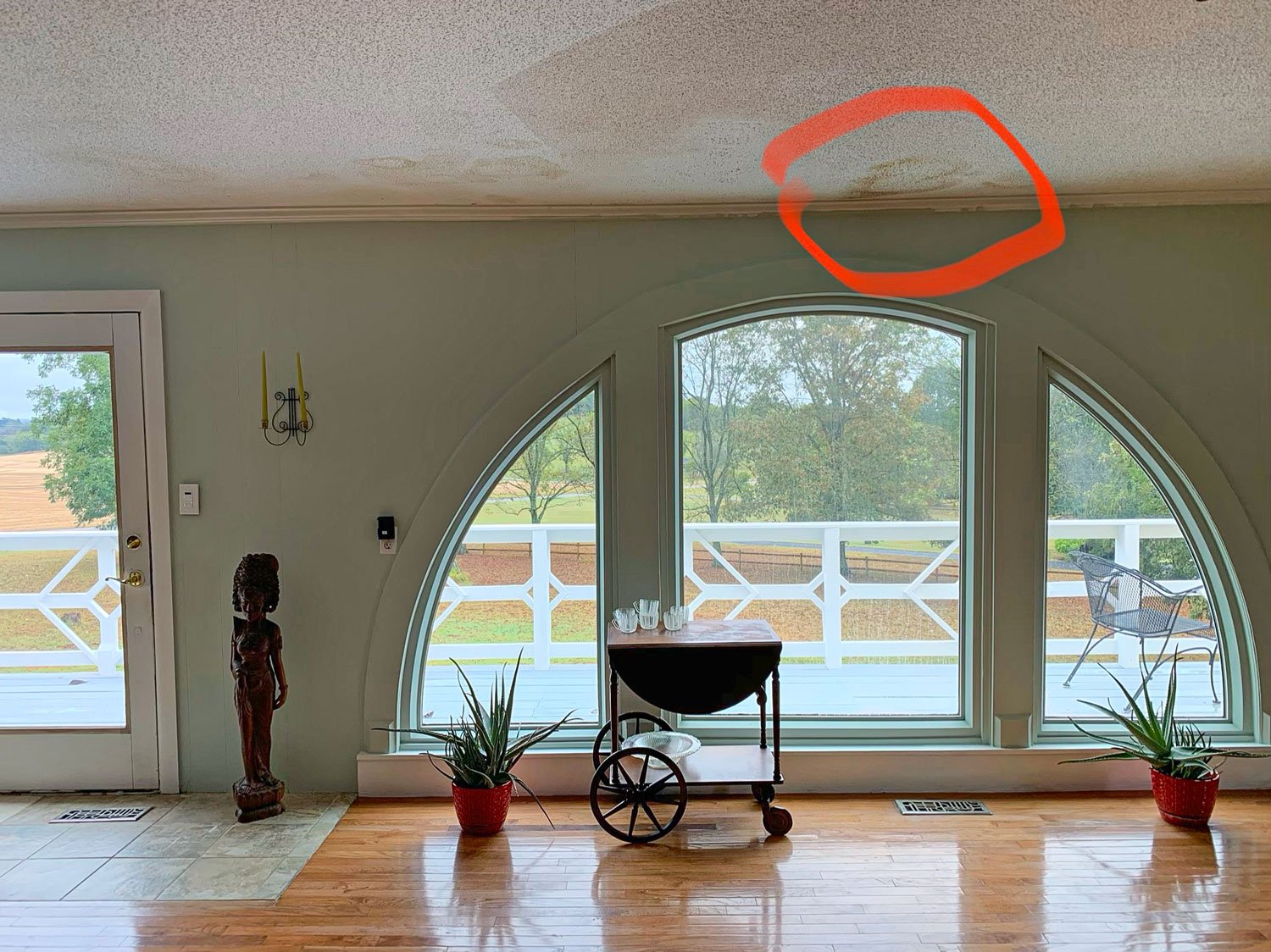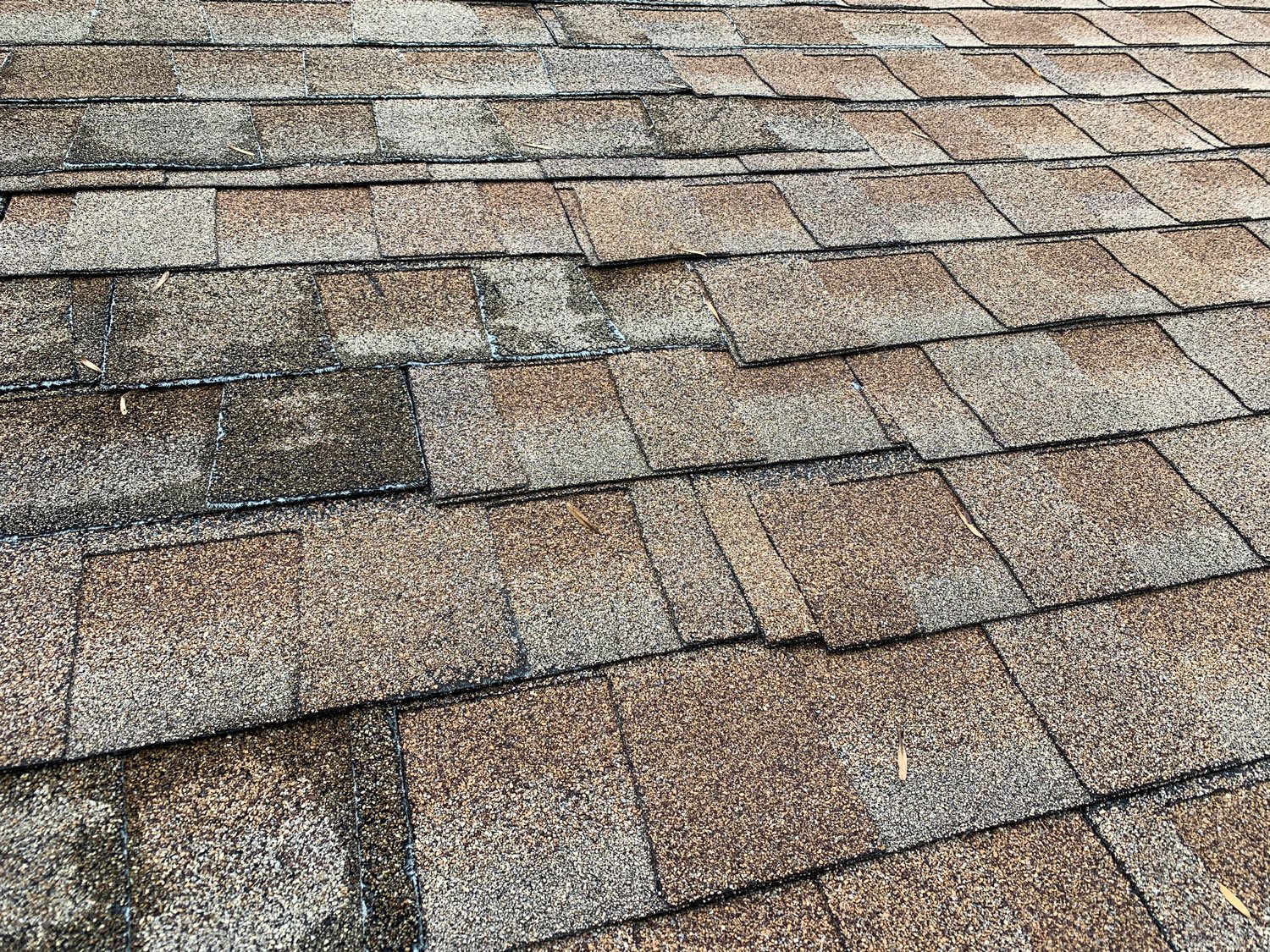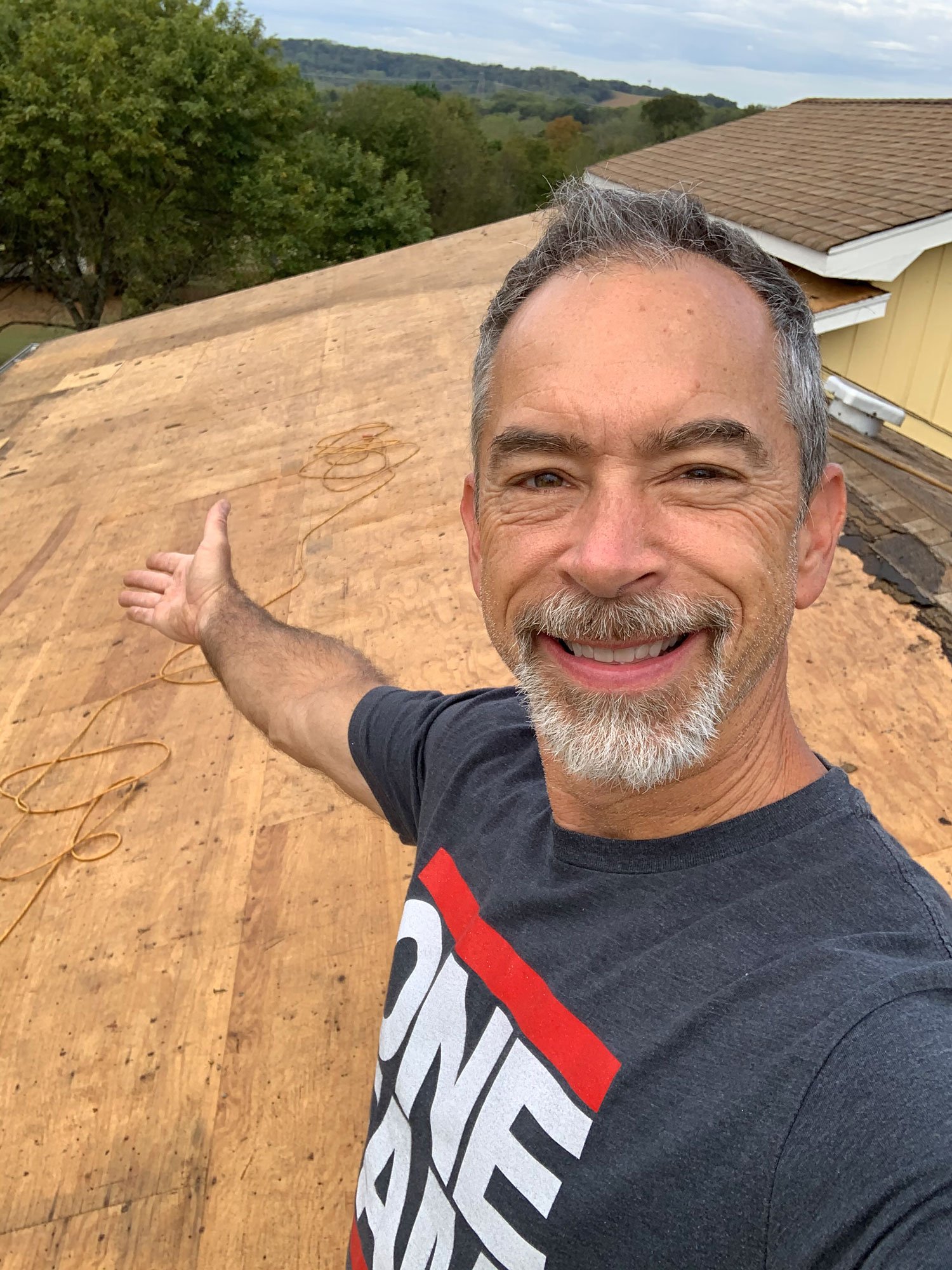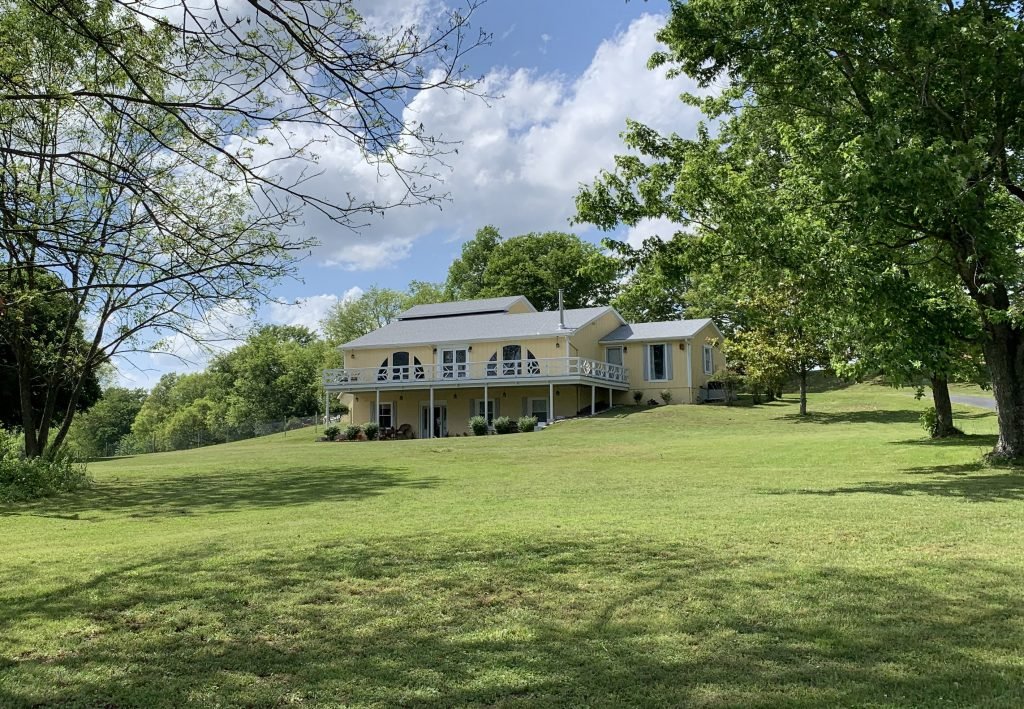Is That a New Wet Spot on the Ceiling?!
First let me point out there is already some weirdness on our living room ceiling. It has obviously been repaired more than once, and there were some old stains from previous leaks. The leak circled in the photo above was noticed the morning after a six week absence of rain, followed by a day-long downpour. And first thing in the morning, NOT a welcome sight!
No cause for alarm - we have excellent insurance, right? I had spotted a lone shingle blown onto the deck below. One simple call to the insurance company and the Hestate is sporting a brand new roof!
WRONG!
After inspecting the roof more closely I realized something was amiss. The shingles for the most part were installed correctly in a straight line. But upon further inspection I began to notice several places where they were very crooked and not overlapping enough. This was NOT GOOD NEWS. Improper installation does not qualify as an insurance event.
Sure enough, after sending photos to an insurance adjuster I was told that storm damage was not the cause but improper installation. I mean, who installed this roof? Obviously they were drunk or blind.
In keeping with the new, brighter color scheme of the house we had planned to upgrade the roof from drab brown to cool grey,
"EVENTUALLY." The EVENTUALLY category is our long-term category that is the catch-all for the projects we cannot readily afford. Well, this project just got bumped to the front of the line!
So began the search for shingles that would fit our house's cheerful personality. Of course the shingle style we selected wasn't in stock so we had to wait a few days.
The next thing we needed to figure out was WHEN to replace the roof. This house is 4475 sq ft and the roof size is daunting. Replacing the roof would have cost around $15,000 if I had hired professionals. My plan was to hire my friends to help me, immediately enrolling them in the "Garrett Hestla School of Roofing." Considering we all had full time jobs and owned no specialized tools or equipment, this meant the project would take weeks to accomplish rather than days. To add to the already mammoth task, we first had to remove two layers of shingles before we could install the new roof.
After the new shingles were delivered I did some calculations. The shingles I purchased are the same style as the two layers already on the roof. The total weight of the existing two layers of shingles on the roof was over 13,000 pounds!
OK, that meant we had to remove approximately 13,000 pounds of shingles from the roof, then haul 7,000 pounds of shingles up the ladder, one 80- pound bundle at a time. FUN! The project seemed to take forever and we had to work around the RAIN. And it did rain.
Popup Fall rainstorms were part and parcel of the roof project. When one would hit we would be forced to stop working, grab all the tools and hurry them to a dry place, then quickly cover the exposed wood. This happened way too often.
One such afternoon storm hit after we removed the shingles from the entire front side of the roof. I had of course kept a diligent watch so I knew it was coming. We spread plastic over the exposed wood and weighed it down with boards and bricks. Would it hold? I was concerned the wind would whip and drag the weighted plastic, uncovering the exposed wood. And it did. But fortunately it didn't leak very much.
Because the roof is so big I divided the removal/install process into several sections. We did the largest section first because that's where the original leak was discovered. Then, before we removed another section of shingles, we installed the new shingles on this first section. Then we moved on and repeated the pattern. This way we didn't have to cover the entire roof with plastic.
As the removal process progressed I was surprised at the amount of water damage or rot to the wood roof decking. This had occurred largely because rain water travels backwards under the shingles and over time soaks the wood on the edges. New aluminum edging solves this problem by creating a drip edge away from the wood. So we have improved the roof!
Where the roof decking was damaged I cut away the rot and replaced it with new plywood.
Don't think my dear wife Cindy was exempt from the "Garrett Hestla School of Roofing."
She took a special course titled, Shingle Shoveling. This multi-campus course involved both "Driving While Pulling a Heavily Laden Trailer" as well as "Wielding the Shingle Shovel" at the local dump. Actually we estimate it took about 10 trips and many hours of shoveling to get the 13,000 pounds of old shingles off the roof, onto the trailer, to the dump, and into the dumpster.
After all the damaged wood was replaced we installed new white synthetic tar paper and then the new shingles. The process was simple. First the new shingles had to be carried up the ladder and spread out. We began at the lowest point with a double layer of shingles, then added the next row on top of the first, then the next and so on until we reached the top. The hard part was maintaining a straight line while adding row after row after row. I'm a stickler for straight lines so this took some extra work for me but it paid off.
Each day of the project we worked until the last moment of daylight so many of these "progress" photos are taken at sunset. Often there would be two or more installing new shingles while another two guys were shoveling old shingles off the roof onto the trailer. Or shoveling shingles that missed the trailer into the trailer.
Once the shingles were installed to the top of the roof line we added a cap. The cap shingles were a special type I purchased just for this style which saved us some time. Once the cap was installed we moved to the next section. We also added new fan vents because the old ones had died. These motorized fan vents help reduce the heat in the attic during the summer which lowers the electric bill and adds life to the roof.




















